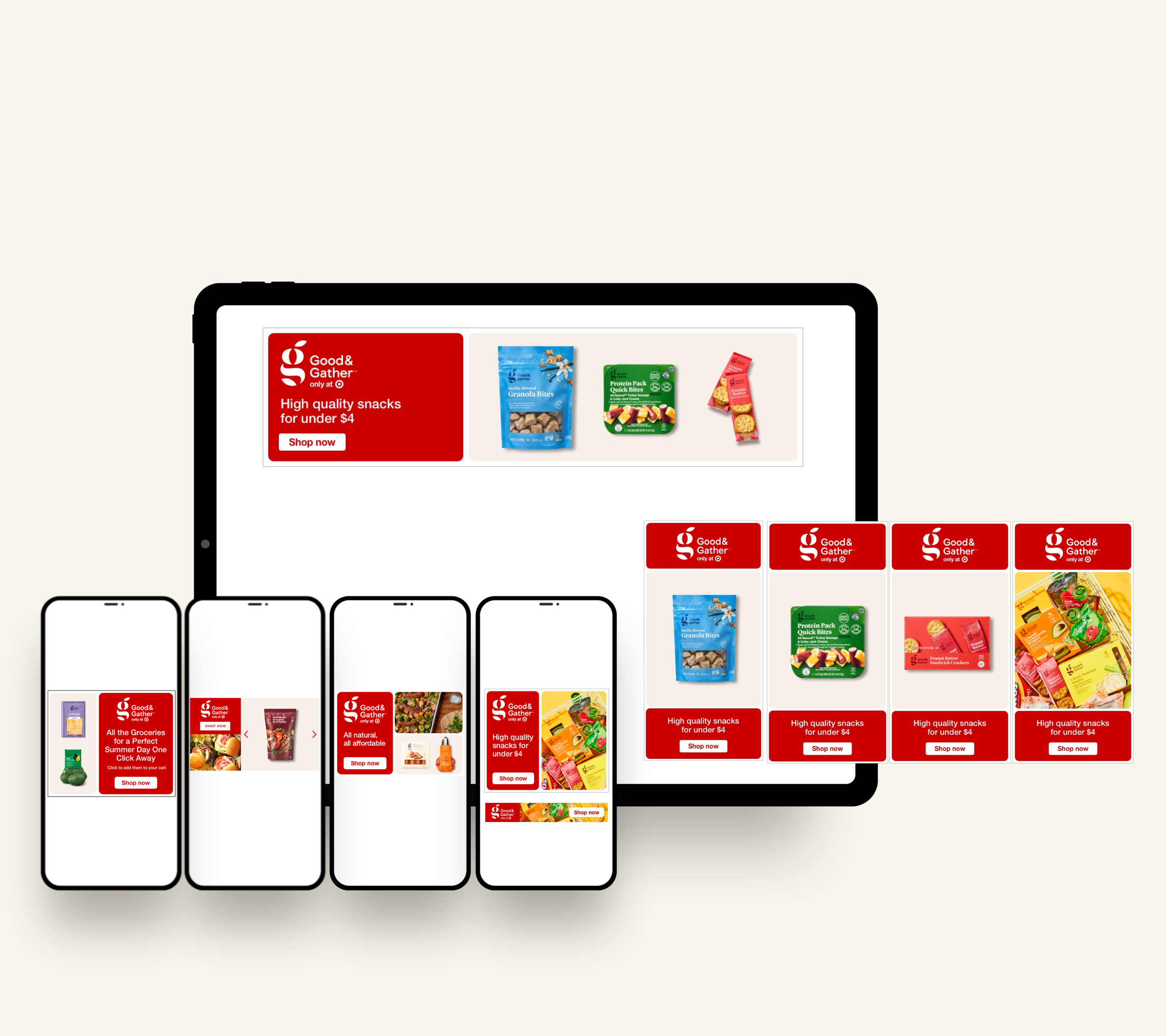Driving Digital Excellence:
Transforming Target’s Global Design Processes
Target's global campaign creatives operated autonomously within distinct segments of the organization, with little cohesion across project management and ad creation processes. Each team functioned independently, leading to siloed workflows and potential inconsistencies in messaging and branding across campaigns. These inefficiencies cost the company millions of dollars annually.
My role as a head senior manager and associate creative director of paid media was to create a comprehensive implementation guide that focuses on UX research, content framework efficiency enhancements, overlap elimination, and reduced asset creation time.
Challenge:
Disorganized operations with no core process betweeen us and india.
Over 50% of the creative team were print designers using indesign to create digital assets.
No paid media best practices or frame works.
Opportunity
To establish a cohesive content creation methodology that prioritized consistency while streamlining the creation process, optimizing efficiency from concept to final execution.
Result
Reduced project setup times and eliminated at least 25% of unnecessary meetings, minimizing confusion across global teams.
Achieved a more than 50% reduction in asset creation time for digital paid media and paid social assets.
Foundation for Future Growth
What I did
I evaluated digital paid media components, identifying elements to retain, adapt, or eliminate.
I integrated UI, UX, and CX principles added motion interactions standardization.
Outcome
Comprehensive Best Practices Guide
Efficiency Enhancements
Overlap Elimination
Asset Creation Time Reduction
Foundation for Future Growth
Target had been without a paid media manager and creative director for almost a year, resulting in a lax approach to operations.
The paid media team’s role within the company was expected to evolve to become more consultative, conceptual, innovative, and educational.
Campaign team processes varied widely depending on project management and creative lead, even using different software.
Over 50% of the creative team were print designers without training for digital operations.
Art directors were expected to collaborate and manage teams in both India and Minnesota production teams with separate processes and software tooling.
Challenges were compounded by external vendors and agencies operating under their own procedures, even on tentpole campaigns.
My primary responsibility was establishing a cohesive content creation methodology with my program manager and stakeholders that prioritized consistency while streamlining the creation process, optimizing efficiency from concept to final execution.
Evaluated components for digital paid media, identifying elements for retention, adaptation, or elimination from Target’s design system.
Conducted interviews with key stakeholders, including art directors, creative directors, project leads, and production artists. The interviews
provided insights into their perspectives, needs, and pain points, informing refinement strategy.Dissected Target messaging structures, considering both broad and offer messages adaptable to various contexts.
Developed a strategy framework applicable to both digital paid media and social platforms.
Strategically integrated UI, UX, and CX principles to enhance content appeal and readability.
Optimized content layout for seamless information processing and incorporated motion interactions for enhanced engagement.
Designed inviting call-to-action shapes to guide user actions intuitively, enhancing overall user experience and interaction.
Gave recommendations for mitigating cognitive overload, embracing top-view media formats for a seamless and enjoyable
user experience across all touchpoints.Spearheaded the global adoption of a standardized asset creation process and successfully established Sketch as the primary content creation tool.
Using a training-based approach, we empower team members with the requisite skills and reduce friction and apprehensions about adopting new processes. This empowerment enabled them to produce high-quality content efficiently and effectively.
My team and I implemented several strategic initiatives to drive efficiency and innovation within our marketing operations, which streamlined processes and reduced overhead.
Key achievements include:
Comprehensive Guide Implementation: Developed an extensive guide that includes roles and responsibilities, a Sketch training program, best practices, and 'thought start' frameworks to streamline project setups.
Efficiency Enhancements: Reduced project setup times and eliminated at least 25% of unnecessary meetings, minimizing confusion across global teams.
Overlap Elimination: Addressed and eliminated redundancies between digital paid media and paid social platforms to optimize resource use.
Asset Creation Time Reduction: Achieved a more than 50% reduction in asset creation time for digital paid media and paid social assets, enhancing productivity.
Foundation for Future Growth: The success of these measures has set the stage for larger-scale initiatives such as expanding creative educational programs, comprehensive evaluations of the content creation process in the paid media ecosystem, and improved collaboration processes with
enterprise partners.















